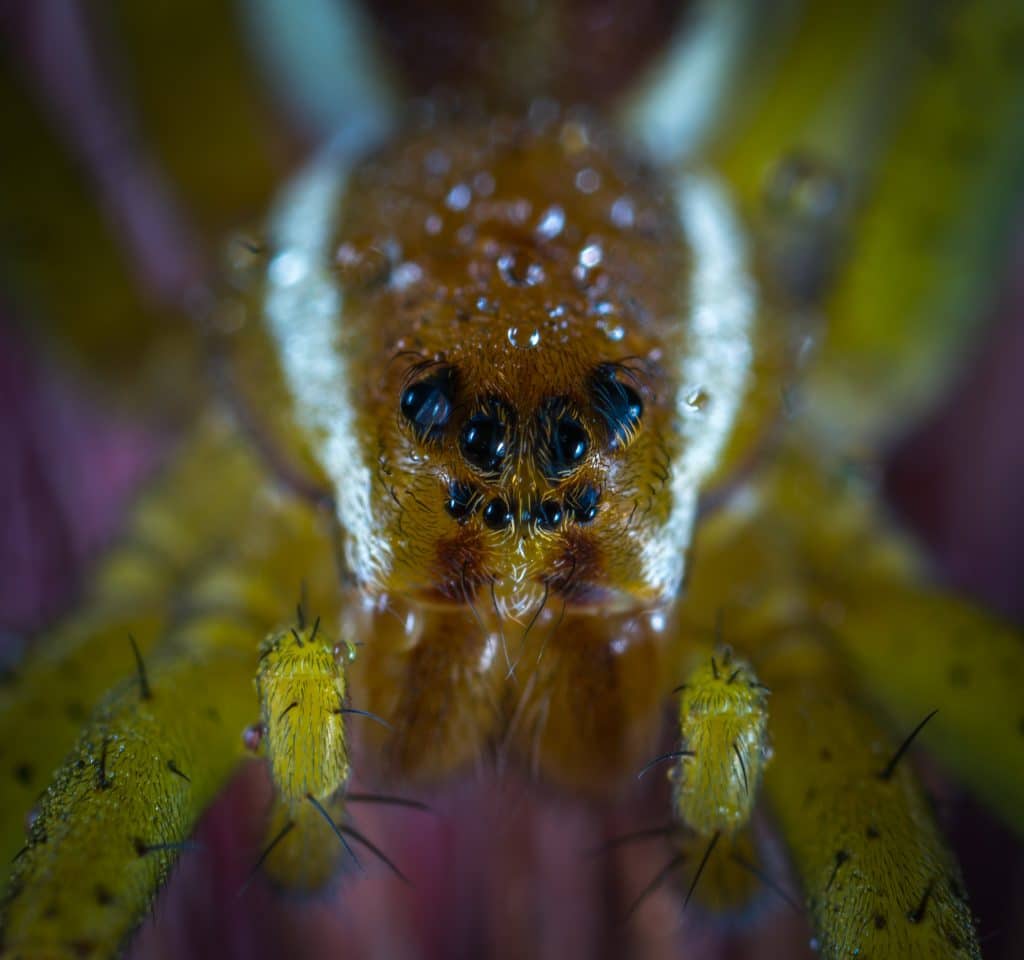Spiders are not too hard to find in the light of day. If you do not see them, their webs usually provide a hint, especially as you wipe the web away from your face. Yes, I am one of those people – not offended by spiders.
But static webs are not used by wandering spiders that scurry about, hunting prey on foot … make that eight feet. These hunting spiders come in many shapes and sizes and can be among the most numerous in most habitats, and most active at night. Wolf spiders are among the most common.
Folks that study these spiders use a technique that takes advantage of the cover of darkness and the shining eyes of spiders. Much like the reflective eyes of cats, a layer of tissue in the back of spider eyes does the same – reflects light. When a beam of light hits this layer, it bounces back to your eyes, making it easy to spot their location.
Looking for spiders using this method is a fun way to discover the many spiders that roam across your lawn or in your bushes. The key is to place your flashlight (any size will do, but little ones are easier to carry) on the side of your head at the level of your eye. The light shining from the flashlight has a more direct path back to your eyes after reflecting off the eyes of a spider.
For wolf spiders, the eyes shine back in a greenish color. It is the two larger centrally located eyes that do most of the shining, as they are the pair, out of eight eyes, that face forward. Once you see your target, it is easy enough to slowly walk up to the spider, keeping your flashlight steady, until the spider becomes visible in the flashlight’s beam.
See how many you can find on your nighttime adventure. You will be surprised just how many spiders are in your yard, staring back at you. And just so you know, those are only the ones that happen to be looking in your direction. Enjoy!
Hope to see you in our great outdoors!
Photo by Egor Kamelev from Pexels




